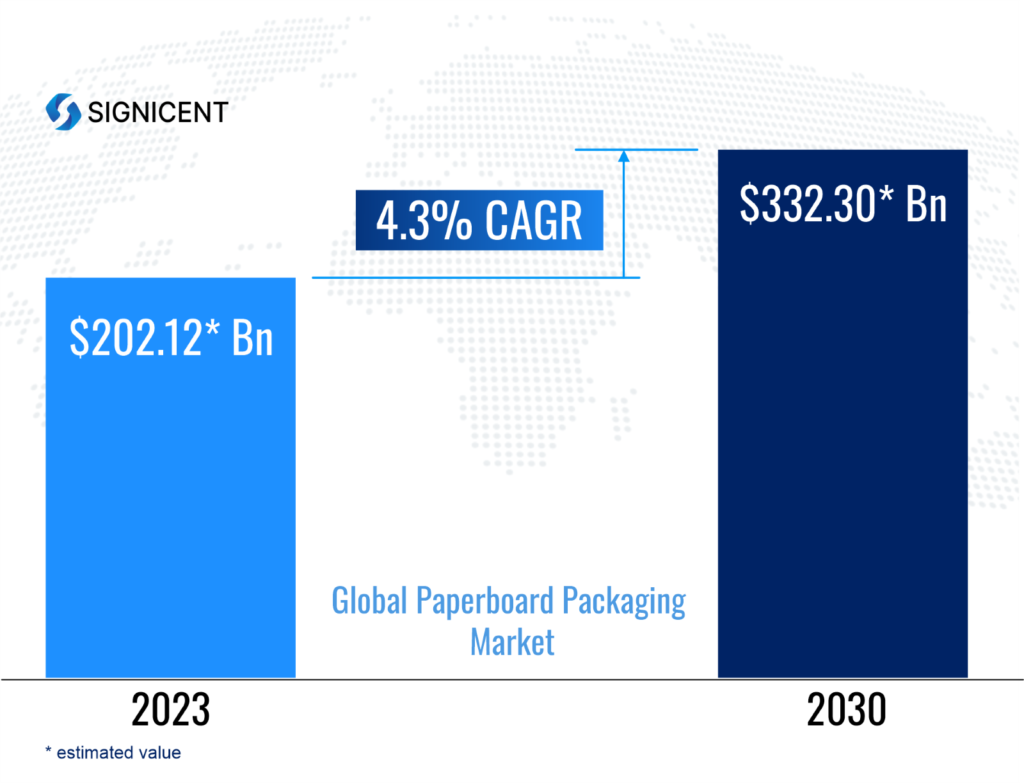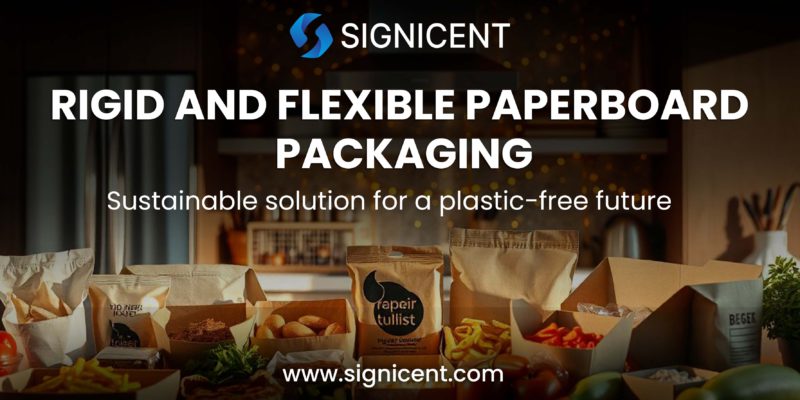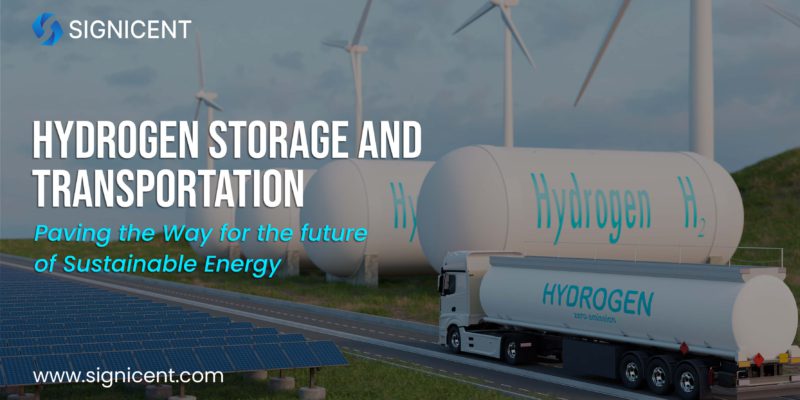Objective
Why Is Paperboard Packaging the Sustainable Choice for the Future?
With global attention increasingly focused on environmental issues, both businesses and consumers are prioritizing sustainable choices. Packaging is at the forefront of this movement, as traditional plastic options are replaced with eco-friendly materials. Paperboard, being biodegradable and derived from renewable sources, offers distinct sustainability benefits that make it attractive for brands aiming to reduce their carbon footprint. Yet, despite its advantages, paperboard packaging faces challenges such as durability, cost, and recyclability that require innovative solutions.
In this blog, we’ll explore the various types of paperboard packaging, discuss the challenges and breakthroughs in the industry, and highlight key players driving the market forward.
Signicent excels in technology scouting for sustainable paperboard solutions, finding eco-friendly materials and coating innovations to help clients replace plastics with renewable, biodegradable alternatives.
What Are Rigid and Flexible Paperboard Packaging Types?
Rigid and flexible paperboard packaging materials offer a sustainable alternative to plastic, providing several environmental benefits without compromising performance. Here’s a closer look at how each type contributes to a greener future:
Rigid paperboard is thick and durable, making it suitable for products that need a strong, protective structure—think luxury goods, electronics, and cosmetics. This material not only offers robustness but also aligns well with eco-friendly branding by showcasing a natural, high-quality look.
Flexible paperboard, on the other hand, is lighter and often used for items like pouches, wraps, and foldable cartons. This type is ideal for products that need a versatile, low-impact packaging solution. The flexibility of this paperboard is perfect for food items and lightweight goods, and it can be easily customized to meet specific packaging needs.
Signicent’s biological sequence search expertise enables clients to explore bio-based adhesives for paperboard, promoting sustainability with enhanced biodegradable packaging materials.
Each year Signicent provides consultancy to hundreds of organizations to help transform their innovations to value.
Why Are Brands Moving to Paperboard Packaging?
Brands are increasingly turning to paperboard packaging as it aligns with sustainability goals, regulatory standards, and rising consumer demand for eco-friendly solutions. Eco-conscious buyers favor its renewable, biodegradable, and recyclable qualities. With regulations, especially in the EU, pushing for recyclable packaging by 2030, brands are encouraged to replace plastic. Paperboard also allows creative, premium designs that resonate with audiences focused on sustainability, supporting both brand loyalty and a circular economy.
Challenges of Traditional Plastic Packaging
Traditional plastic packaging has long been the default for many industries due to its durability and low cost. However, plastic has considerable environmental drawbacks that are difficult to ignore:
- Plastic Pollution: Plastic waste accumulates in landfills and oceans, damaging ecosystems and wildlife. Over 300 million tons of plastic are produced each year, with only a small percentage ever being recycled.
- Climate Impact: The production and disposal of plastic contribute significantly to greenhouse gas emissions, accelerating climate change.
Through comprehensive technology monitoring, Signicent ensures clients stay updated on eco-packaging trends, regulatory shifts, and innovations, fostering a competitive edge in sustainable paperboard solutions.
Innovations Reshaping Paperboard Packaging
To overcome these challenges, companies are investing in innovative technologies aimed at making paperboard packaging more sustainable and versatile:
- Biodegradable and Plant-Based Coatings: Companies like Mondi are pioneering plant-based barrier coatings that replace plastics, improving recyclability and biodegradability without compromising durability.
- Water-Based Inks and Adhesives: Water-based inks and adhesives minimize environmental harm and are compatible with recycling systems, reducing pollution while enhancing the eco-friendliness of paperboard packaging.
- Nanotechnology in Rigid Packaging: Nanomaterials are being used to enhance strength and barrier properties, enabling rigid paperboard to withstand the rigors of high-value product packaging, such as electronics or premium cosmetics.
- Digital Printing Solutions: Advanced digital printing allows brands to customize packaging designs without the need for excess materials or waste. This method is particularly useful for e-commerce brands that need scalable, visually appealing packaging options.
- Closed-Loop Recycling Initiatives: Companies like Graphic Packaging International are working on closed-loop recycling systems that ensure paperboard packaging can be repurposed continuously, reducing waste and preserving resources.
Signicent’s technology gap analysis identifies areas for improvement in paperboard durability, recyclability, and eco-friendliness, allowing clients to achieve optimal, sustainable packaging performance.
Key Benefits of Paperboard Packaging
- Sustainability: Sourced from renewable forests, paperboard packaging reduces environmental impact through recyclable and compostable materials.
- Biodegradability: Paperboard decomposes naturally, minimizing landfill waste and lowering the ecological footprint.
- Versatility: Suitable for a range of products across food, electronics and retail, paperboard adapts to both flexible and rigid uses.
- Brand Appeal: Eco-friendly and design-flexible, paperboard helps brands stand out and attract sustainability-focused consumers.
Using patent chemical structure search, Signicent identifies unique eco-friendly coating technologies, supporting clients in achieving recyclable and sustainable paperboard solutions.
Regional Market Dynamics: Paperboard Packaging Trends and Regulations
North America, the push for eco-friendly materials has led companies to adopt paperboard solutions extensively, especially in sectors like e-commerce, food, and retail. Companies such as International Paper and Graphic Packaging International are leading efforts in sustainable packaging by investing in advanced recycling and production processes.
Europe is at the forefront of sustainable packaging regulations. The European Union’s Packaging and Packaging Waste Directive mandates that all packaging must be recyclable by 2030. European companies like DS Smith and Smurfit Kappa are heavily involved in paperboard innovation, with a focus on reducing plastic use and increasing recycling rates.
The Asia-Pacific region, led by Japan and China, has a large market for paperboard packaging due to its strong manufacturing base. Companies like Oji Holdings in Japan have integrated sustainability into their packaging solutions, while regional governments are supporting recycling infrastructure improvements to manage paper waste better.
Signicent technology assessment & valuation services provide clients with insights into sustainable paperboard innovations, evaluating market potential, viability, and investment opportunities within eco-packaging solutions.
Market Outlook for Paperboard Packaging
According to a report by Signicent’s Market Research the global paperboard packaging market size is likely to reach values in the ranges shown below.

Factors like eco-conscious consumer demand, regulatory pressures, and innovative production technologies are driving this expansion. Flexible paperboard is particularly popular in the food and beverage sector, while rigid paperboard continues to be favored for packaging high-value goods.
Leading Companies Driving Paperboard Packaging Innovation
Several companies are pioneering advancements in rigid and flexible paperboard packaging, each contributing unique solutions to enhance sustainability. Here are some leading innovators:

Signicent’s Contribution:
At Signicent, we empower companies by providing in-depth technology scouting, market analysis, and patent landscapes focused on sustainable packaging solutions. Through our research on rigid and flexible paperboard innovations, we help clients overcome challenges in recyclability, durability, and eco-friendly coatings, driving the adoption of sustainable packaging. Partner with Signicent to align your packaging strategies with market trends and regulatory standards while enhancing your brand’s commitment to a greener future.
Conclusion
Is Paperboard Packaging the Key to a Plastic-Free Future?
As more companies and consumers recognize the importance of sustainability, rigid and flexible paperboard packaging is emerging as a compelling alternative to plastic. With continued innovation in materials, coatings, and recycling processes, paperboard packaging can fulfill its potential as a sustainable choice for many industries.
The future of packaging is undoubtedly green, but achieving widespread adoption of paperboard will require collaboration across sectors and regions. As companies invest in eco-friendly solutions and governments set stricter guidelines, the shift toward a circular economy becomes more feasible.
Are you ready to make the switch to sustainable packaging? Whether you’re a business looking to reduce plastic waste or a consumer seeking eco-friendly options, choosing paperboard packaging is a powerful way to contribute to a more sustainable world.
About Signicent LLP
We assist businesses globally in their technology innovations, R&D, new product development, patents, valuation, product commercialization & market research needs.
Services Offered:
- Patent Landscape
- Patent Portfolio Analysis
- Patent Invalidity Search
- Patent Licensing Services
- Freedom to operate (FTO)
- Chemical Structure Search
- Design Patent Search
- Technology Scouting
- Technology Landscape Analysis
- Technology gap analysis
- Technology Intelligence
- Market Research
- Bio Sequence Search
- Manufacturers Search/ Supplier search
Elevate your Innovation and Research with Signicent’s cutting edge approach to assist you with Technology and Market related matters alongside the IP aspect of the analysis.


